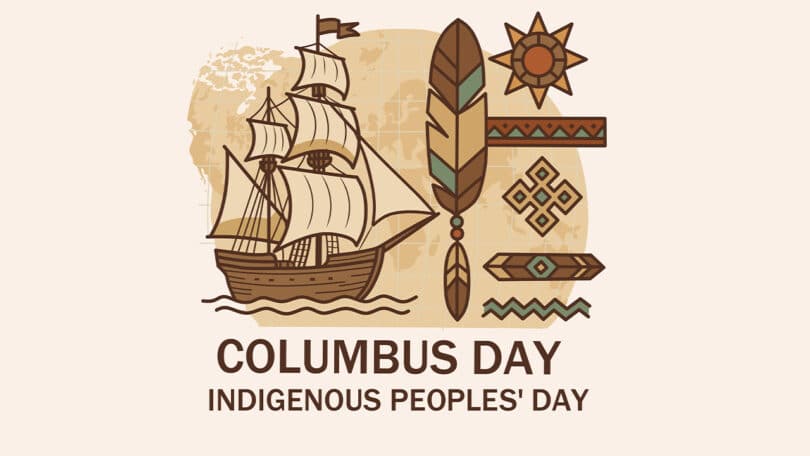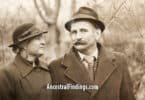Columbus Day began as a celebration of exploration and immigrant pride. Over time, it became one of the most debated observances in the United States. This is the story of how a single holiday came to represent two very different views of American history.
The First Celebrations
The idea of honoring Christopher Columbus in the United States dates back to the late 1700s. The earliest known celebration took place in New York City in 1792. The Columbian Order, also called Tammany Hall, organized a ceremony to mark the 300th anniversary of Columbus’s first voyage. The young republic saw in Columbus a symbol of courage, exploration, and the spread of Western civilization.
During the early 1800s, public references to Columbus appeared in schoolbooks, political speeches, and patriotic art. Cities named after him multiplied, including Columbus, Ohio, which was founded in 1812. The explorer’s image fit well with America’s self-image as a bold new world.
By the mid-nineteenth century, the celebration of Columbus took on new meaning for Italian immigrants. Many arrived in the United States during a period of widespread prejudice and social exclusion. They looked to Columbus, an Italian navigator sailing under the Spanish crown, as a national hero who had changed the course of world history. Honoring him became a way to assert cultural pride and to show that Italians belonged in American society.
The 400th Anniversary and a National Proclamation
The most significant early recognition came in 1892, when President Benjamin Harrison called for a national observance to commemorate the 400th anniversary of Columbus’s first voyage. His proclamation encouraged schools and communities to mark the occasion with patriotic events, flag displays, and lessons about exploration and unity.
The timing was not accidental. One year earlier, a mob in New Orleans had lynched eleven Italian immigrants. The act caused a diplomatic crisis between the United States and Italy. Harrison’s decision to honor Columbus was intended not only to celebrate discovery but also to heal political wounds and acknowledge Italian contributions to American life.
Across the country, parades, speeches, and school ceremonies filled the day. Children recited oaths to the flag, and church bells rang in tribute. The 1892 observance also inspired the creation of the Pledge of Allegiance, which first appeared that same year in The Youth’s Companion magazine as part of the national celebration.
Columbus Becomes a National Hero
After the 1892 proclamation, civic groups continued to campaign for an annual holiday. The Knights of Columbus, a Catholic fraternal organization founded in Connecticut in 1882, played a leading role. The group saw in Columbus both a patriotic symbol and a defender of faith.
Through the early twentieth century, Columbus Day parades became fixtures in cities with large Italian-American populations. Marching bands, floats, and flags celebrated both Italian heritage and American opportunity. Schools taught children that Columbus was the man who “discovered America,” and his name appeared in textbooks, maps, and monuments.
In 1934, after decades of lobbying, Congress passed a joint resolution asking the president to proclaim October 12 as Columbus Day. President Franklin D. Roosevelt signed it into law, officially establishing the first federal recognition of the holiday. Columbus Day joined the small list of national observances honoring individuals, alongside Washington’s Birthday and Lincoln’s Birthday.
Changing Dates and New Traditions
For many years, Columbus Day was celebrated on October 12, regardless of the day of the week. In 1968, Congress passed the Uniform Monday Holiday Act, which aimed to give workers more three-day weekends by moving several federal holidays to Mondays. Beginning in 1971, Columbus Day was fixed on the second Monday in October.
The change brought practical benefits for businesses and schools but also reduced some of the historical connection to the actual anniversary date. Still, parades continued to grow in scale. New York City’s Columbus Day Parade, which began in 1929, eventually became one of the largest ethnic parades in the United States. Other cities, including Chicago and San Francisco, held similar events that drew thousands of spectators.
By the mid-twentieth century, Columbus Day had become a familiar fixture of American life. It honored discovery, exploration, and the immigrant story. For many, it symbolized the blending of old-world heritage and new-world opportunity.
Historical Reexamination
As historians revisited early European exploration, they began to reassess the legacy of Columbus. Accounts from the explorer’s own journals and those of his contemporaries revealed a darker side of the voyages. Enslavement, violence, and the spread of European diseases devastated Indigenous populations.
These findings challenged the heroic narrative that had long surrounded Columbus. For Indigenous communities, the arrival of Europeans marked the beginning of colonization and centuries of loss. Activists and scholars argued that celebrating Columbus without acknowledging these consequences distorted the historical record.
By the 1970s and 1980s, the debate over Columbus Day had reached classrooms, city councils, and universities. Some educators began presenting a more balanced view, describing both the achievements and the human cost of European expansion. Statues and monuments dedicated to Columbus became subjects of protest and discussion.
The Birth of Indigenous Peoples’ Day
In 1992, the city of Berkeley, California, took a decisive step by replacing Columbus Day with Indigenous Peoples’ Day. The year marked the 500th anniversary of Columbus’s first voyage. The new holiday was created to honor the history, culture, and resilience of Native peoples across the Americas.
Berkeley’s decision set a precedent that gradually spread to other communities. Minneapolis, Seattle, Denver, and dozens of other cities followed suit. Several states, including South Dakota, Maine, New Mexico, and Alaska, later made similar changes at the state level.
Indigenous Peoples’ Day emphasizes education and cultural awareness. Celebrations often include storytelling, traditional music, art exhibits, and community gatherings organized by Native organizations. The goal is not simply to replace one holiday with another but to broaden the public understanding of history and recognize the survival and contributions of Indigenous nations.
A Divided Observance
Today, Columbus Day remains a federal holiday, meaning that government offices, banks, and many schools still close on the second Monday in October. However, observance varies widely from state to state. Some regions continue to hold parades and ceremonies in honor of Columbus. Others have officially adopted Indigenous Peoples’ Day instead. A few recognize both holidays simultaneously.
This split reflects the diversity of American perspectives. For Italian Americans, Columbus Day continues to represent cultural pride and a reminder of the struggles faced by immigrant communities seeking acceptance. For Indigenous peoples, it is a painful reminder of the beginning of colonization. The coexistence of the two observances mirrors the broader conversation about how nations remember their pasts.
Public opinion polls show that attitudes toward the holiday are mixed. Many Americans now favor acknowledging both historical viewpoints. Museums, libraries, and schools increasingly use the October holiday as an opportunity to teach a fuller version of history—one that includes both European exploration and Indigenous experience.
Monuments and Memory
Physical symbols of Columbus’s legacy remain scattered across the United States. Statues and monuments erected in the late nineteenth and early twentieth centuries still stand in many cities. However, in recent years, some have been removed or relocated after public debate. Supporters argue that these monuments represent historical heritage. Opponents believe they honor a figure associated with suffering and conquest.
The controversy over monuments is part of a larger global discussion about how societies commemorate the past. History is not erased when statues come down or names change; rather, it continues in the debates, records, and community decisions that follow. Each generation chooses how to interpret and represent the figures who shaped its collective memory.
The Broader Meaning of the Debate
The transformation of Columbus Day into two distinct holidays shows how national memory evolves. It reflects the ongoing effort to reconcile pride in exploration with acknowledgment of historical harm. Neither holiday fully cancels the other. Together, they form a conversation that continues to unfold.
This process of reexamination is not unique to Columbus. Many societies revisit their national heroes and reconsider their historical narratives as new evidence and perspectives emerge. In that sense, the story of Columbus Day is also the story of how Americans continue to define their identity—through debate, education, and a willingness to confront complexity.
Conclusion
Columbus Day began as a celebration of discovery, faith, and cultural pride. Over more than two centuries, it has become one of the most discussed holidays in American life. What started as a unifying tribute has grown into a national reflection on exploration, colonization, and memory.
The addition of Indigenous Peoples’ Day does not erase Columbus from history. Instead, it expands the narrative, giving voice to those whose stories were once overlooked. Whether observed separately or side by side, these two holidays demonstrate how the meaning of history evolves as a nation becomes more aware of its past.
Both observances remind Americans that history is complex, that memory changes, and that understanding requires listening to every side of the story.
Read More:
An Indigenous Peoples’ History of the United States by Roxanne Dunbar-Ortiz
Columbus Day (Holiday Histories) by Tamim Ansary
American Holocaust: The Conquest of the New World by David E. Stannard







